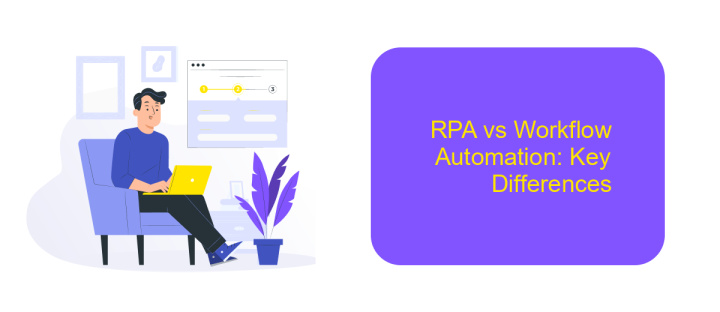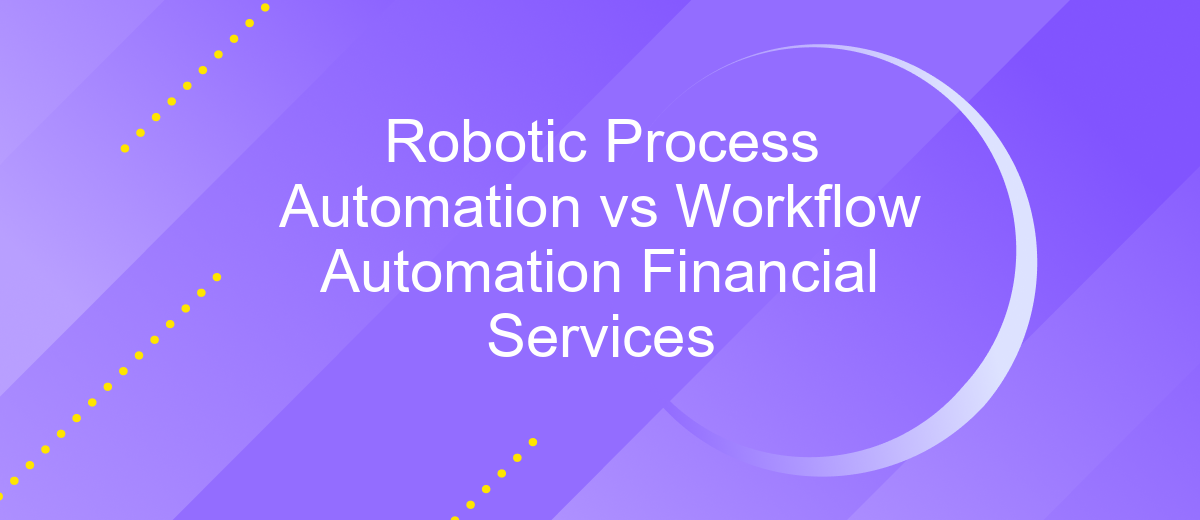Robotic Process Automation vs Workflow Automation Financial Services
In the financial services industry, efficiency and precision are crucial. Robotic Process Automation (RPA) and Workflow Automation have emerged as powerful tools to streamline operations. While both technologies aim to enhance productivity, they serve distinct purposes and offer unique benefits. This article explores the differences, advantages, and applications of RPA and Workflow Automation in the financial sector.
Introduction
In today's fast-paced financial services industry, the need for efficiency and accuracy is more critical than ever. Two prominent solutions that have emerged to address these needs are Robotic Process Automation (RPA) and Workflow Automation. Both technologies aim to streamline operations, reduce errors, and enhance productivity, but they do so in distinct ways.
- Robotic Process Automation (RPA): Utilizes software robots to automate repetitive, rule-based tasks, such as data entry and transaction processing.
- Workflow Automation: Focuses on automating the sequence of tasks and processes, ensuring that each step is completed in the correct order and by the appropriate personnel.
Understanding the differences and synergies between RPA and Workflow Automation is essential for financial services organizations aiming to optimize their operations. Tools like ApiX-Drive can further enhance these automation efforts by facilitating seamless integrations between various software systems, ensuring that both RPA and Workflow Automation solutions work harmoniously. This introduction sets the stage for a deeper exploration of how these technologies can transform financial services.
Core Concepts

Robotic Process Automation (RPA) and Workflow Automation are two pivotal technologies in the financial services sector, each serving distinct purposes. RPA focuses on automating repetitive, rule-based tasks, such as data entry, transaction processing, and compliance checks. It leverages software robots to mimic human actions, ensuring accuracy and efficiency without the need for manual intervention. On the other hand, Workflow Automation streamlines and optimizes the sequence of business processes, ensuring that tasks are completed in a predefined order, often involving multiple systems and human approvals.
While RPA excels in handling structured tasks, Workflow Automation is crucial for managing complex, multi-step processes. Integration services like ApiX-Drive play a significant role in enhancing both RPA and Workflow Automation by enabling seamless data exchange between disparate systems. ApiX-Drive facilitates the integration of various applications, allowing for real-time data synchronization and process automation, thus improving operational efficiency and reducing the risk of errors. By leveraging these technologies, financial institutions can achieve greater agility, accuracy, and scalability in their operations.
Benefits and Limitations

Robotic Process Automation (RPA) and Workflow Automation offer significant benefits to financial services, enhancing efficiency and reducing operational costs. RPA excels in automating repetitive tasks, such as data entry and report generation, freeing up human resources for more strategic roles. Workflow Automation, on the other hand, streamlines complex business processes, ensuring consistency and compliance across operations.
- Increased Efficiency: Both RPA and Workflow Automation significantly reduce the time required to complete tasks.
- Cost Reduction: Automating processes minimizes human error and lowers operational costs.
- Scalability: These technologies can easily scale with business growth.
- Improved Compliance: Automation ensures adherence to regulatory standards.
- Enhanced Accuracy: Reduces the risk of errors in data processing.
Despite these advantages, limitations exist. RPA may struggle with unstructured data, requiring additional tools for data management. Workflow Automation can be complex to set up and may need specialized knowledge. Services like ApiX-Drive can facilitate integrations, making it easier to connect various systems and streamline processes. However, both technologies require ongoing maintenance and updates to remain effective.
RPA vs Workflow Automation: Key Differences

Robotic Process Automation (RPA) and Workflow Automation are two distinct technologies utilized in financial services to streamline operations. While both aim to enhance efficiency, they differ fundamentally in their approaches and applications.
RPA focuses on automating repetitive tasks by mimicking human actions. It uses software robots to perform tasks such as data entry, transaction processing, and report generation. Workflow Automation, on the other hand, orchestrates a sequence of tasks, ensuring that each step in a process is completed in a predefined order.
- Scope: RPA automates individual tasks, whereas Workflow Automation manages entire processes.
- Flexibility: RPA is more adaptable to changes in user interfaces, while Workflow Automation requires predefined rules and workflows.
- Integration: Workflow Automation often integrates with various systems using tools like ApiX-Drive, while RPA can operate across multiple applications without deep integration.
In summary, RPA excels in automating specific tasks and can be quickly deployed, making it ideal for short-term gains. Workflow Automation, however, provides a comprehensive solution for long-term process optimization by ensuring that tasks are executed in a structured manner.


Implementation Considerations
When implementing Robotic Process Automation (RPA) or Workflow Automation in financial services, it is crucial to evaluate the specific needs and processes of your organization. Begin by conducting a thorough assessment to identify repetitive and time-consuming tasks that can benefit from automation. Consider the compatibility of existing systems and the scalability of the chosen automation solution. Ensure that the selected tools can integrate seamlessly with your current software infrastructure. For instance, using integration services like ApiX-Drive can facilitate smooth data transfer between various applications, enhancing the overall efficiency of your automation strategy.
Another critical consideration is the security and compliance requirements specific to the financial sector. Implementing RPA or Workflow Automation must adhere to stringent regulatory standards to protect sensitive financial data. Invest in robust security protocols and regularly update them to mitigate risks. Additionally, involve key stakeholders from different departments in the planning and implementation phases to ensure that the automation solutions align with organizational goals and compliance mandates. Proper training and support for employees are also essential to maximize the benefits of automation and ensure a smooth transition.
FAQ
What is the primary difference between Robotic Process Automation (RPA) and Workflow Automation in financial services?
Can RPA and Workflow Automation be used together in financial services?
What are some common financial services processes that can benefit from RPA?
How do I start implementing RPA and Workflow Automation in my financial services firm?
What are the challenges of implementing RPA and Workflow Automation in financial services?
Apix-Drive is a universal tool that will quickly streamline any workflow, freeing you from routine and possible financial losses. Try ApiX-Drive in action and see how useful it is for you personally. In the meantime, when you are setting up connections between systems, think about where you are investing your free time, because now you will have much more of it.

